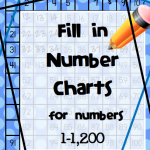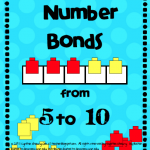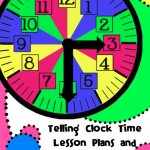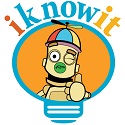Subtraction Flash Cards Like You Have Never Used Them…
I remember teaching subtraction before I learned the strategies to teach with. I used to tell kids to “learn all your 1’s, then learn all your 2’s, and then your 3’s etc., but it really seemed that many of the kids stayed on the same subtraction facts for a long time and never learned them. As a result, I made this packet of flashcards but with strategies attached so that children could have a pattern to which to attach their learning. If our minds can find a pattern then it is much easier to learn something and remember it. These also have printable backs to make your life easier!

There are suggestions for how to use them and place them so that patterns are easier to learn. For example, see below…
Here is the tried and true think addition strategy that everyone knows…

How about subtracting 9…what a doozy for many kids! This strategy helps you think of using 10 as a helper in subtraction to get the answers for subtracting 9.

I have included a chart with 16 different ways to group subtraction facts for teaching patterns. All of your students may not need all 16 ways and many of the strategies repeat facts so that students have multiple ways to think of getting the answer if they need them.
Take a moment to stop by TPT and view the preview.

GIVEAWAY DETAILS:
Prize: $100 Teachers Pay Teachers Gift Card
Giveaway Organized by: Kelly Malloy (An Apple for the Teacher)
Co-hosts: An Apple for the Teacher, Kindergarten Is Crazy, Pint Size Learners, Mickey’s Place, Ms. K, 180 Days of Reading, Teacherof20, Star Kids, Mrs Wenning’s Classroom, Peas in A Pod, The Literacy Garden, Chocolate 4 Teachers, Jackie Crews, A Plus Kids, The Craft of Teaching, Kamp Kindergarten, Believe to Achieve by Anne Rozell, Globe Trottin’ Kids, Resource Room Relevance, Teach Me T, TheBeezyTeacher, and The Monkey Market.
Rules: Use the Rafflecopter to enter. Giveaway ends 1/13/20 and is open worldwide.
Are you a Teacher Blogger or Teachers pay Teachers seller who wants to participate in giveaways like these to grow your store and social media? Click here to find out how you can join our totally awesome group of bloggers!
a Rafflecopter giveawayHappy New Year!
I don’t know about you, but 2019 was a tough year! I’m so thankful for a new start! May 2020 bring many wonderful things for you this year in both your professional and personal life!

Giveaway Time!

Prize: $100 Teachers Pay Teachers Gift Card
GIVEAWAY DETAILS:
Giveaway Organized by: Kelly Malloy (An Apple for the Teacher)
Co-hosts: An Apple for the Teacher, Kindergarten Is Crazy, Pint Size Learners, Mickey’s Place, Ms. K, 180 Days of Reading, Teacherof20, Star Kids, Mrs Wenning’s Classroom, Learning Inspired, Peas in a Pod, Guide Teach Inspire, Chocolate 4 Teachers, Jackie Crews, A Plus Kids, Teaching in the Heart of Florida, Kamp Kindergarten, Believe to Achieve by Anne Rozell, TheBeezyTeacher, Globe Trottin’ Kids, Resource Room Relevance, Teach Me T, and The Monkey Market.
Rules: Use the Rafflecopter to enter. Giveaway ends 12/13/19 and is open worldwide.
Are you a Teacher Blogger or Teachers pay Teachers seller who wants to participate in giveaways like these to grow your store and social media? Click here to find out how you can join our totally awesome group of bloggers!
a Rafflecopter giveawayQuick and Easy Thanksgiving Enrichment Lesson for K and 1st
First, get a small box. I have a small glittery box I bought for a dollar at the Dollar Tree. With the mystery box students have to guess what is inside. They have to ask me 10 questions that have yes or no answers before I will let them guess what is inside the box.
At one school I work at the students are quicker to guess items and so I gave them no hints. At the other school, the students required hints. You will need to do the mystery box activity with them several times before they get the hang of how to ask good questions. Anyways, so I put a feather in the box.
Next, I tell them to imagine they have a pet turkey but that he got very sick and lost all of his feathers. As a result he will be very cold this winter so what will we do to keep him warm?
Then I give students a picture with a turkey that has no feathers. I honestly found some black and white turkey clip art and then printed it. I would share it with ya’ll but I literally cut it with scissors and pasted it on a white sheet of paper and ran copies. I told students to draw a picture of what they would do for their turkey and they did. I also told students I was looking for original ideas about how to keep the turkey warm. I got plenty of non original ideas like feathers, a blanket, a cover etc. The original responses were such things as give him medicine for his feathers to grow, build a fire, put him in the oven, build him a house, and a HOT TUB (which was my favorite).
After this I show them the story of this bird who lost all her feathers. This bird gained lots of fans and people mailed her sweaters from all over the world. Now, I have tried this lesson showing the video before I have the kids come up with their ways to keep their turkey warm and I like showing the video last because it doesn’t influence the students’ originality.
In closing have the students with original ideas show their work.
DONE..SEE…QUICK…EASY!
Wish I Had Known About the Brain!
A couple of years in a row now my partners at other schools have begun the year teaching about the brain and mindsets. I was like, “Yeah, that sounds great.” BUT, I had already planned something else in my mind. They shared their lessons with me and they all revolved around this book…Your Fantastic Elastic Brain by Deak Ph.D., JoAnn and Sarah Ackerley.

Here is a brief sketch of what I did with my students in 1st and 2nd grades this year. These were three 30 minute enrichment lessons. Most of this I cannot take credit for since I didn’t write the lessons, but I adapted them for my own use.
Day 1: I read the first few pages of the book and we learned the parts of the brain here as we touched the parts of the brain on our heads, we talked about each part’s function. We did a coloring sheet in which students colored parts of the brain like are on this page of the book (sorry, but I am not at liberty to share the coloring page).

We also sang with this Story Bots You Tube song.
[embedyt] https://www.youtube.com/watch?v=Nnl7DLSNFV8[/embedyt]Day 2: We read the next few pages of the book and reviewed the parts of the brain. We acted out different scenarios which were pre-prepared (I didn’t come up with them on the spot in other words). Students had to guess which parts of the brain they thought were being used to perform the actions that the children were doing.
Day 3: We read the last few pages of the book, and made neurons with our arms, palms, and fingers. We talked about how electrical impulses travel down the neurons to tell the body what to do. Then I talked to students about how mistakes are the biggest teacher (reiterating what the book says). I brought up the idea of a growth mindset and a fixed mindset. I held a balloon and blew it up. I said this is like a growth mindset. I also held up a flat balloon and said this is a fixed mindset. Then I asked students what they could do to make it easier to blow up the balloon. I wanted them to tell me to stretch it (like their brain). From this point, I found a random fixed mindset/growth mindset poster on the internet and read it while holding the balloon. I had students check phrases they had said before on both the fixed and growth mindset side. This website has a good chart about characteristics of fixed and growth mindset patterns.
What I love when teaching about the brain and fixed/growth mindset is that in essence you are teaching children the power of choices to let their mind expand or stay stagnant. With my older students, I also discussed how when you let your mind go a certain direction over and over it makes a deeper pathway similar to when you walk on the grass a whole lot. I ask the students what helps the grass to stop being dead in the same spot. Students invariably are able to say that you stop walking on it and when the rain comes it grows back up. So it is with anyone’s brain. They stop thinking the worst and the grass grows back up. Their brain stops having that pathway.
I hope you get a chance to teach about the brain and mindsets in your classroom. You won’t regret it!
Critical Thinking Bulletin Board
Here is just a quick bulletin board I put up at the beginning of the year. All you need is some construction paper and tissue paper to make this one work. I kind of think I should have added more fire towards the top. What do you think? What do you think this rebus says? Ideas?

If I had more time to make this board at the beginning of the year, I would have added white Christmas lights behind the tissue paper to add a flickering effect to the fire.
Have you figured out what the board says yet?
SET THE WORLD ON FIRE–great back to school theme!







































